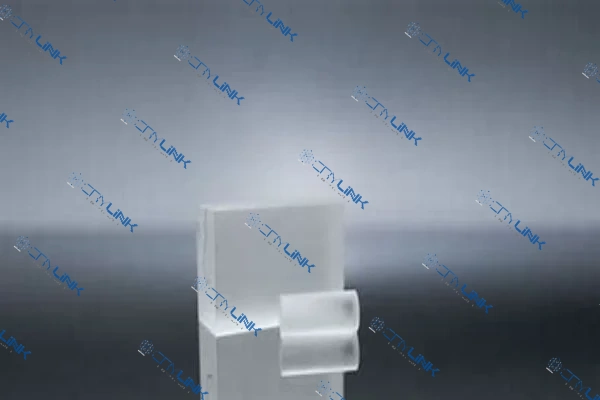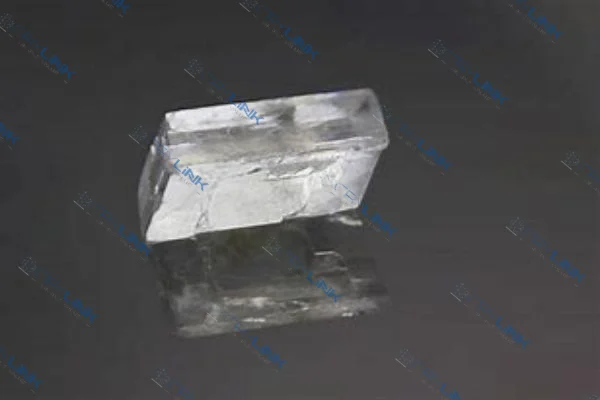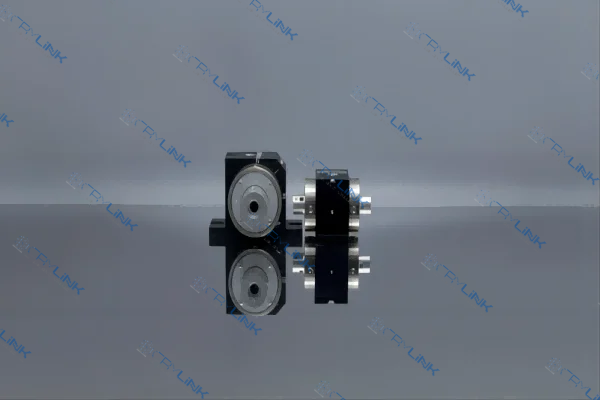Optical crystals play a pivotal role in the realm of photonics, shaping the way we harness and manipulate light for various applications. In this comprehensive guide, we delve deep into the different types of optical crystals, their unique characteristics, and their quintessential applications.
Introduction to Optical Crystals
Optical crystals are solid materials in which atoms are arranged in a periodic structure. These crystals are unique because they can interact with light in specific ways, leading to various optical effects. The classification of these crystals is based on their properties and the way they interact with light.

Non-linear Optical Crystals
Non-linear optical crystals stand as a marvel in the world of photonics, offering unique properties that have been instrumental in advancing various optical applications. At the heart of their functionality is their inherent ability to alter the frequency of light, a phenomenon that has paved the way for numerous technological innovations.
When we talk about the ability of these crystals to change light frequency, we are essentially referring to their capacity to merge two photons of a given frequency to generate a single photon of a different frequency. This process, known as second-harmonic generation, is just one of the many non-linear optical processes these crystals can facilitate. The beauty of this process lies in its precision and efficiency, allowing for the creation of light sources that were previously deemed challenging or impossible to achieve.
But what makes these crystals so special? The answer lies in their internal structure. The periodic arrangement of atoms and molecules within these crystals creates an environment where light can interact in ways that are not possible in ordinary materials. When light, in the form of photons, passes through these crystals, it can interact with the crystal lattice in a manner that leads to the generation of new photons with altered frequencies.
One of the most notable applications of non-linear optical crystals is in the realm of laser technology. Lasers, by design, emit light at specific wavelengths. However, there are instances where a different wavelength is desired, and this is where these crystals come into play. By passing laser light through a non-linear optical crystal, it’s possible to produce a spectrum of wavelengths from a single, primary input wavelength. This capability has been instrumental in the development of multi-wavelength laser systems used in various fields, from medical imaging to telecommunications.
Furthermore, these crystals play a crucial role in frequency doubling, where the output light has twice the frequency (and half the wavelength) of the input light. Another significant application is parametric oscillation, a process where an optical parametric oscillator (OPO) uses the crystal to generate two new waves from a single input wave, effectively splitting the input into two different frequencies.
In essence, non-linear optical crystals are not just another component in the optical toolkit. They are transformative elements that have reshaped the landscape of photonics, enabling technologies and applications that were once beyond reach. Their ability to manipulate light in such unique ways ensures that they will remain at the forefront of optical research and technology for years to come.

Electro-optic Crystals
Electro-optic crystals are a marvel in the realm of optics, renowned for their ability to interact dynamically with light under the influence of an electric field. The core of their functionality lies in their refractive index’s adaptability. When an electric field is introduced, these crystals undergo a change in their refractive index, a property that is not commonly found in standard materials.
This unique characteristic empowers them to control light’s phase and amplitude, making them invaluable in various optical applications. For instance, in advanced communication systems, where data transmission speed and efficiency are paramount, electro-optic crystals serve as the backbone in modulators and switches, ensuring that signals are transmitted with precision. Furthermore, in the world of laser technology, where controlling light’s intensity and direction is crucial, these crystals are employed as tunable filters, adjusting the laser’s output to the desired frequency.
Acousto-optic crystals
On the other hand, acousto-optic crystals stand as a testament to the intricate interplay between light and sound. These crystals have the remarkable ability to diffract light when subjected to an acoustic wave. This phenomenon is a result of the periodic pressure variations caused by the acoustic wave, leading to a modulation in the crystal’s refractive index. As the light traverses through these varying refractive index regions, it gets diffracted, resulting in the modulation of light.
This interaction has paved the way for the development of a plethora of optical devices. In laser technology, for instance, acousto-optic crystals are integral to laser scanning systems, ensuring that the laser beam is directed precisely. Moreover, in the broader spectrum of photonics, these crystals are harnessed in devices like frequency shifters, which adjust the frequency of optical signals, and tunable filters that selectively allow specific wavelengths to pass through. The synergy between light and sound in acousto-optic crystals has undeniably expanded the horizons of optical technology, enabling innovations that were once deemed unattainable.

Magneto-optic Crystals
Magneto-optic crystals are a fascinating subset of optical materials, distinguished by their unique interaction with magnetic fields. At their core, these crystals possess the ability to alter their optical properties in the presence of a magnetic field. This interaction manifests in various ways, but one of the most notable effects is the rotation of the plane of polarization of light. Imagine a beam of light, with its waves oscillating in a specific direction or plane. As this light passes through a magneto-optic crystal under a magnetic field, its plane of oscillation rotates, a phenomenon known as the Faraday effect.
This rotation of the plane of polarization is not just a mere scientific curiosity; it has profound implications in the world of optics and technology. For instance, in optical communication systems, where the integrity and clarity of signals are paramount, magneto-optic crystals are used in isolators. These isolators ensure that light travels in only one direction, preventing any unwanted reflections that could degrade the signal quality.
Furthermore, the ability of these crystals to modulate light makes them invaluable in devices like optical modulators, which control the intensity, phase, or polarization of light. In the realm of data storage, magneto-optic crystals are the cornerstone of certain magnetic storage devices, where data is written and read using the interplay of light and magnetic fields.
In essence, magneto-optic crystals serve as a bridge between the worlds of magnetism and optics, enabling technologies that harness the best of both realms. Their unique properties and diverse applications underscore their significance in today’s advanced optical systems and devices.

The Expansive Universe of Optical Crystals and Their Impact
The realm of optical crystals is as diverse as it is profound. While the primary classifications such as electro-optic, acousto-optic, and magneto-optic crystals often take center stage in discussions, it’s essential to recognize that these represent just the tip of the iceberg. Beyond these well-known categories lies a vast expanse of lesser-known optical crystals, each with its unique properties and applications. These crystals, though not as widely discussed, play pivotal roles in niche sectors and advanced research areas. They might be employed in specialized instruments, experimental setups, or cutting-edge technologies that are still in their nascent stages. Their contributions, though not always in the limelight, are integral to the advancements we witness in the field of photonics.
Moreover, the significance of optical crystals in modern technology cannot be overstated. These crystalline structures, with their ability to manipulate and interact with light in myriad ways, have been instrumental in driving innovations across various sectors. Think of the rapid strides we’ve made in communication systems. The high-speed, clear, and efficient transmission of data over vast distances is made possible, in large part, due to the capabilities of optical crystals. They ensure that signals are transmitted with minimal loss, maximum clarity, and utmost efficiency.
Similarly, in the medical field, optical crystals have revolutionized imaging techniques. Advanced imaging modalities that provide clear, detailed, and real-time visuals of internal body structures owe their efficacy to these crystals. Whether it’s in diagnosing ailments, guiding intricate surgical procedures, or monitoring treatment responses, optical crystals play a silent yet indispensable role.
In essence, optical crystals are the backbone of modern photonics and optics. Their diverse range, coupled with their unique properties, ensures that they remain at the forefront of technological advancements. As we continue to push the boundaries of what’s possible in the optical realm, these crystals will undoubtedly be at the heart of many groundbreaking innovations to come.

Conclusion
Optical crystals, with their diverse range and unique properties, have revolutionized the way we perceive and utilize light. Their applications span across various industries, making them indispensable in modern technology. As research progresses, we can anticipate even more groundbreaking discoveries and innovations stemming from these remarkable materials.
FAQs
- What are the primary factors that determine the classification of optical crystals?
- Optical crystals are primarily classified based on their interaction with light and their inherent properties.
- How do non-linear optical crystals differ from electro-optic crystals?
- Non-linear optical crystals change the frequency of light, while electro-optic crystals modulate the phase and amplitude of light when subjected to an electric field.
- Are magneto-optic crystals used in everyday devices?
- Yes, magneto-optic crystals are used in devices like optical isolators in communication systems and in some magnetic storage devices.
- What role do acousto-optic crystals play in laser technology?
- Acousto-optic crystals are used in laser scanning and signal processing due to their ability to modulate light with sound.
- Can one optical crystal fit all applications?
- No, specific optical crystals are suited for particular applications based on their unique properties and interactions with light.

Frank
Frank graduated from the University of Shanghai for Science and Technology, majoring in optics. As a technical engineer at Crylink Company, he deeply understands crystal materials and laser components.
Related Video(s) with this Article
Related Product(s) with this Article
Related Application(s) with this Article
